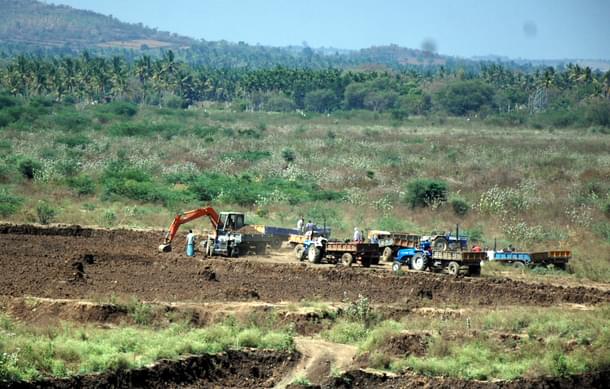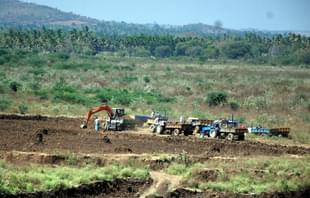Economy
Rural Areas Continue To Lead Revival Of Indian Economy: Here Are July Numbers Pointing To Further Recovery
M R Subramani
Aug 03, 2020, 03:48 PM | Updated 03:48 PM IST
Save & read from anywhere!
Bookmark stories for easy access on any device or the Swarajya app.


Rural India continued to lead the recovery in Indian economy in July with digital payments, Goods and Services Tax (GST) tax collections, tractor sales, two-wheeler sales, and sowing of kharif crops continuing to register impressive growth.
After a record 134 crore transactions took place through the United Payments Interface (UPI) in June, digital payments rose to a new record last month.
According to the National Payments Corporation of India, digital transactions increased to 149 crore in July through UPI, the flagship digital payment platform.
The value of transactions increased 11 per cent compared with June from Rs 2.62 lakh crore to Rs 2.90 lakh crore.
Compared with July last year, the transactions have nearly doubled from Rs 1.46 lakh crore.
Other Digital Transactions Also Rise
Similarly, transactions through Immediate Payment Service (IMPS) hit a record Rs 2.25 lakh crore in July, increasing by nine per cent compared with June and rising by 24 per cent compared with July last year.
Payments under the Bharat Bill more than trebled with 748 live bill payment companies in July compared with less than 250 during April-May this year, as more companies joined the platform.
Last year, 662 companies were on the platform during the review period.
One concern, however, was the drop in the aadhar-enabled payment system, which saw a 11 per cent drop from June to Rs 17,729 crore.
The drop is attributed to cash transfers under the Prime Minister Garib Kalyan Yojana (PM’s Welfare Fund for the poor) ending in June.
Other digital systems such as FASTag, that helps collection of toll on highways, increased in July compared with June, but they were off from the peaks seen last year.
Digital transactions have increased to record on the heels of buoyant economic activities in rural areas.
Digital payments have got a leg-up also because people have switched over to contactless payment due to the novel coronavirus pandemic.
The government transferring all benefits to its targeted sections directly to bank accounts is also pushing up digital transactions.
GST Collection At 86 Per Cent Of July 2019 Collection
The Goods and Services Tax (GST) revenue collected in July was recorded at 86 per cent of the income generated during the same period a year ago.
According to the government, a sum of Rs 87,422 crore was collected against Rs 1,02,082 crore in July last year.
Collections were also lower than in June, when a large number of people paid taxes due for February, March and April.
Tractor Sales Continue To Be Buoyant
Sales of tractors, which showed the first signs of the rural sector leading the country’s economic revival, continued to be buoyant in July.
Mahindra & Mahindra has reported a 27 per cent rise in sales of tractors at 25,402 units in July 2020 compared with 19,174 it sold in July last year.
According to Hemant Sikka, President, Mahindra & Mahindra Farm Equipment Sector, this is the highest-ever sales of tractors by the company in July.
The July sales follow the company’s second-best sales of tractors in June, when it sold 35,844 units.
Sonalika Tractors, which is challenging the major firms, said its sales increased 71.7 per cent in July to 10,223 tractors compared with the same period a year ago.
Sales in June were higher at 13,691 units.
Another major producer, Escorts, said its tractor sales increased 9.5 per cent in July to 5,322 units compared with the same period last year.
Rating firm ICRA has said that tractor sales will be nearly two per cent higher than the last fiscal, despite the slowdown caused by the Coronavirus pandemic.
Tractor sales could have been even higher, but for the manufacturing firms being not able to produce to their capacity.
Manufacturers are still bound by the guidelines to avoid the spread of the pandemic, while they are yet to get full supplies of components.
With the guidelines being relaxed further from this month, these companies are expected to ramp up their production.
Automobile Sales Show Promise
One of the features of automobile sales in July was market leader in car sales, Maruti Suzuki, registering a 1 per cent rise compared with July last year.
The market leader in two-wheelers, Hero MotorCorp, almost touched the dispatch levels of vehicles seen during the same time a year ago.
Other manufacturers like Honda, Toyota and Mahindras registered a decline of over 10 per cent, but this is basically because buyers continue to put off car purchases while these firms are yet to resume full operations.
However, compared with June, sales in July of four-wheelers and two-wheelers were far better.
For example, Maruti’s sales nearly doubled compared with June, while Hyundai’s sales were over 70 per cent higher than the previous month.
Honda Motorcycles sales improved by a third compared with June, while new entrant, MG motors, posted a 40 per cent rise in July sales compared with the same period a year ago.
#Kharif crop sowing crosses 885 lakh hectare area: https://t.co/TQ5zypewHs pic.twitter.com/gDnERDY1uv
— PIB India (@PIB_India) August 5, 2016
Kharif Crops Sowing Gains 13 per cent
The other promising sign of rural economy revival is the 13 per cent rise in Kharif crops sowing till 31 July.
According to the Ministry of Agriculture and Farmers Welfare, nearly 88.21 million hectares (mh) have been covered under various crops this year against 77.43 mh during the same period last year.
Among these crops, paddy, oilseeds, cotton and pulses are witnessing a good increase in acreage, aided by a good monsoon and higher storage level in the reservoirs across the country.
Rainfall under the influence of the South-West Monsoon is one per cent higher than normal at 436.7 mm with only seven meteorological subdivisions reporting deficient rain.
The India Meteorological Department has predicted that monsoon rains will continue to be good this month and September also.
The water level in 123 major reservoirs in the country is higher than the last 10 year’s normal storage by three percentage points at 69.982 billion cubic meters (BCM).
The storage is higher by 41 percentage points compared with last year.
The higher sowing has naturally resulted in sales of seeds increasing.
One of the major seed firms has reported that its sales are at a seven-year high.
A bumper harvest of rabi crops and good remuneration for growers have encouraged higher kharif sowing.
Besides, the Centre's procurement of foodgrains such as wheat and rice from the growers for the central pool has ensured that growers get the fixed minimum support price (MSP) for their crop.
This has put more money in the hands of the rural people, who have also been helped by the Narendra Modi government, which has put more money into circulation in the rural parts.
A surge in rural employment through the Mahatma Gandhi National Rural Employment Scheme (MNREGS) is also helping the economy rebound.
Market sentiments are likely to remain buoyant, translating into a robust demand in the coming months for various goods, according to experts.
M.R. Subramani is Executive Editor, Swarajya. He tweets @mrsubramani





